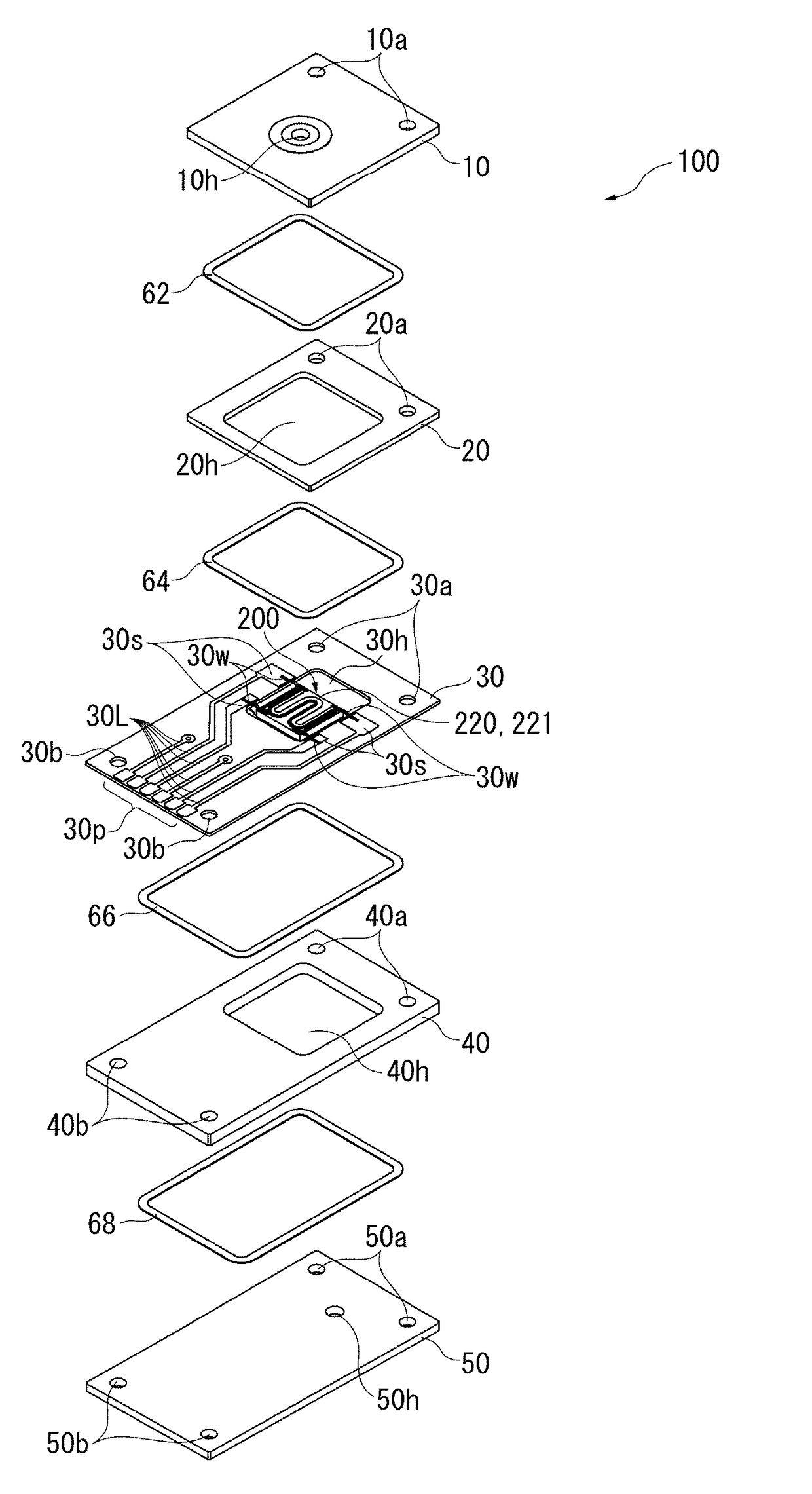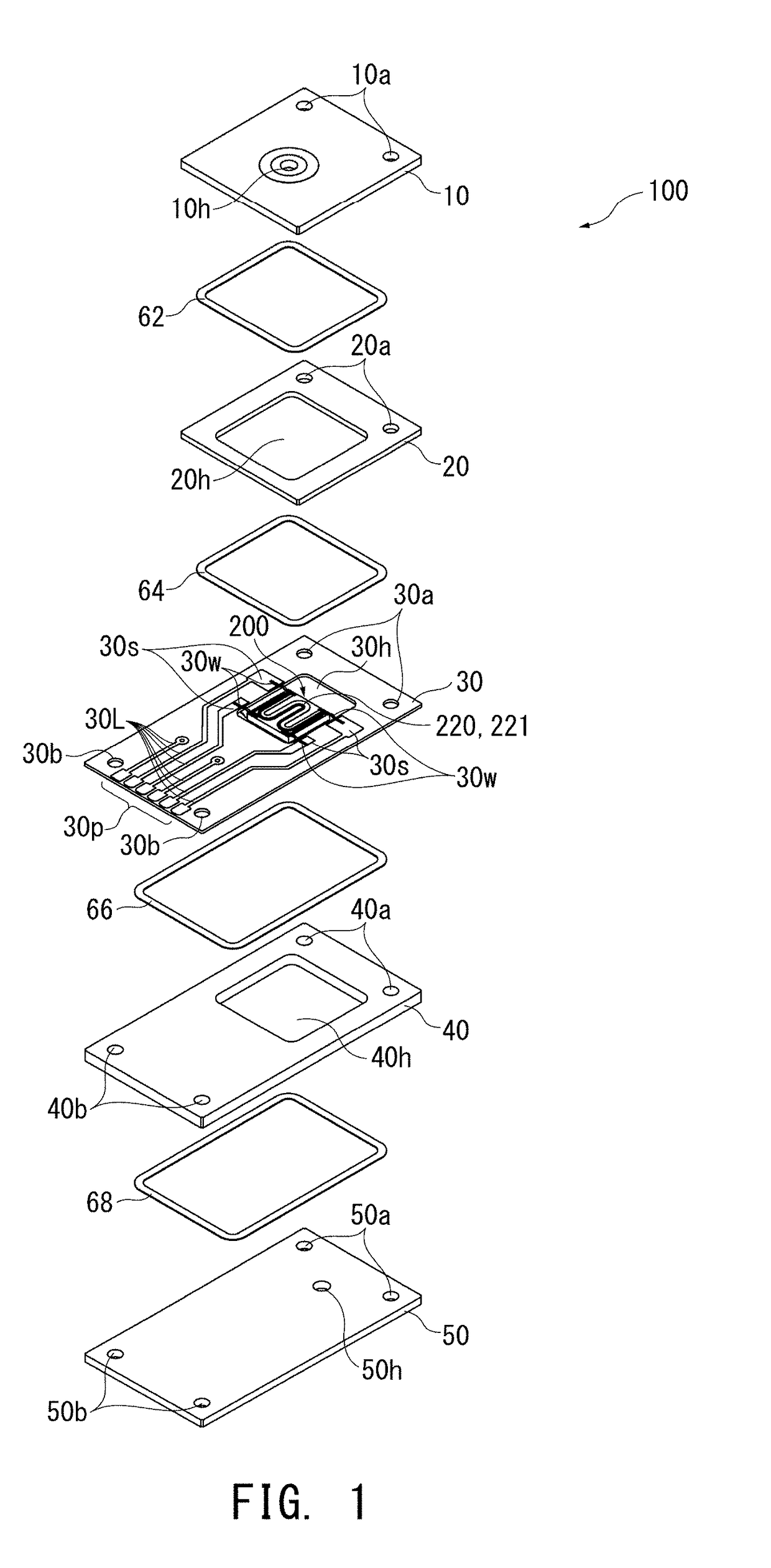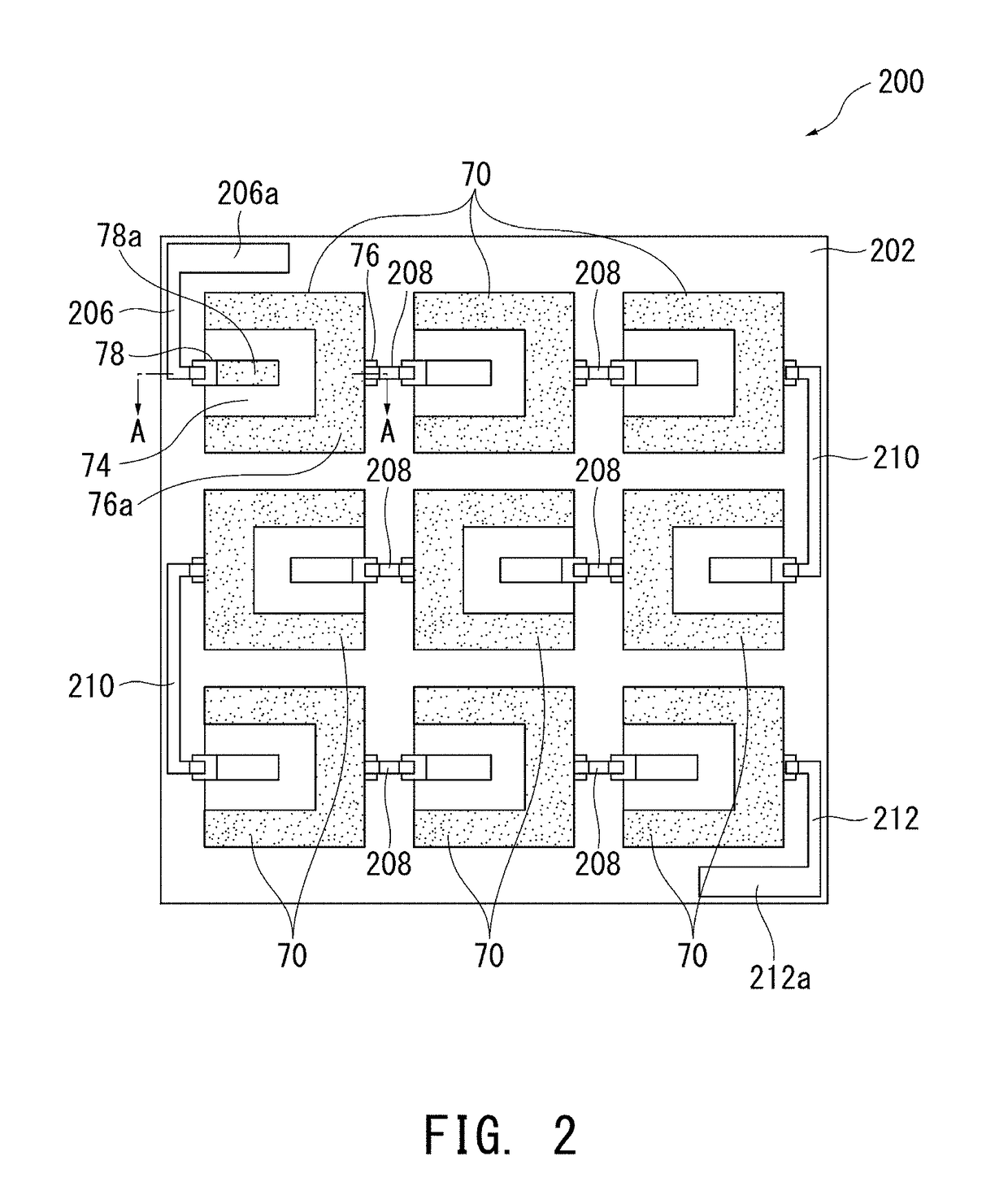Mixed-potential-type sensor
a sensor and potential-type technology, applied in the field of mixing-potential-type sensors, can solve the problem that the tungsten oxide component cannot reach the interface between the second layer and the other of the porous electrodes, and achieve the effect of preventing deterioration of sensitivity
- Summary
- Abstract
- Description
- Claims
- Application Information
AI Technical Summary
Benefits of technology
Problems solved by technology
Method used
Image
Examples
example 1
[0069]A mixed-potential-type sensor having the structure shown in FIG. 3 was manufactured as follows.
[0070]First, a green base substrate 202 of alumina was formed by a doctor blade method. A Pt paste was screen-printed on one side of the green base substrate 202 to thereby form the heater 220 and the temperature sensor 221. After that, the entirety was heated at 400° C. for 4 hours for debindering and fired at 1,350° C. for 2 hours.
[0071]A YSZ (the addition amount of Y to ZrO2: 8 mol %) paste was screen-printed on the opposite side of the fired base substrate 202, and firing was carried out at 1,350° C. for 3 hours in a nitrogen atmosphere to thereby form the solid electrolyte layer 74. In this firing, sintering of YSZ was not allowed to progress sufficiently, so that the solid electrolyte layer 74 became porous. Another method for making the solid electrolyte layer 74 porous is to add glass particles or the like to the YSZ paste which foam at that firing temperature.
[0072]Subsequen...
PUM
 Login to View More
Login to View More Abstract
Description
Claims
Application Information
 Login to View More
Login to View More - R&D
- Intellectual Property
- Life Sciences
- Materials
- Tech Scout
- Unparalleled Data Quality
- Higher Quality Content
- 60% Fewer Hallucinations
Browse by: Latest US Patents, China's latest patents, Technical Efficacy Thesaurus, Application Domain, Technology Topic, Popular Technical Reports.
© 2025 PatSnap. All rights reserved.Legal|Privacy policy|Modern Slavery Act Transparency Statement|Sitemap|About US| Contact US: help@patsnap.com



